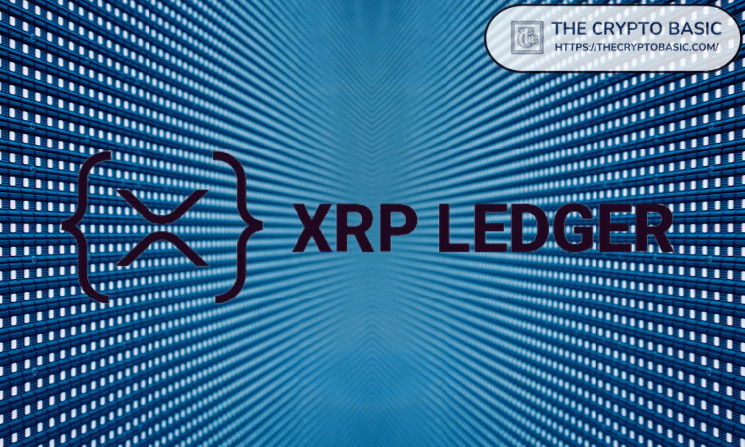Analytics from the XRP Ledger (XRPL) reveal that just 50 wallets are responsible for a substantial number of transactions over two weeks.
Dr. Artur Kirjakulov, co-founder and CEO of XPMarket, shared the XRP latest news based on an analysis of transactions from Sept. 1 to 15, which totaled over 25.7 million.
The data, pulled from Kirjakulov’s analytics work, indicate that wallet activity on the XRPL is highly concentrated, with a few wallets dominating transaction volumes. For context, the XRPL boasts 5.319 million total wallets, with over 70K created over the last two months.
I keep working on my #XRPL data analytics. New interesting find:
1 wallet makes 15% of all XRPL transactions
2 wallets make 29% of all XRPL transactions
3 wallets make 37% of all XRPL transactions
5 wallets make 45% of all XRPL transactions
10 wallets make 58% of all XRPL… pic.twitter.com/95URcB0a3n— Dr. Artur Kirjakulov (@Kirjakulov) September 19, 2024
50 XRPL Wallets Account for 76% of Transactions
Kirjakulov broke down his findings further, showing that a single wallet alone accounted for 15% of all transactions in the first two weeks of this month. The second-largest wallet increased this to 29%, while three wallets combined handled 37% of transactions.
Meanwhile, the top five wallets executed 45% of the total, and by the time the analytics considered the top ten wallets, they were responsible for 58% of all transactions during the two-week period.
The total number of unique wallets within the period under analysis was 73,042. However, the top 50 wallets drove the lion’s share of activity, processing over three-quarters of all transactions.
The analysis covered several types of transactions, including AMMDeposit, NFTokenAcceptOffer, payments, NFTokenCreate, OfferCancel, OfferCreate, AMMwithdrawal, and TrustSet. Other transaction types were negligible in number, contributing only a small fraction.
As part of his investigation, Kirjakulov shared details on the top 10 wallets and indexed all 50 wallets that dominated transaction activity during the period. This disclosure allowed further scrutiny by other members of the XRP community.
Top50, as people requested
rapido5rxPmP4YkMZZEeXSHqWefxHEkqv6 rogue5HnPRSszD9CWGSUz8UGHMVwSSKF6 rBTwLga3i2gz3doX6Gva3MgEV8ZCD8jjah r4BBoZghscZgjMS5GJj1QCEdpWKdn7iTXn r3rhWeE31Jt5sWmi4QiGLMZnY3ENgqw96W rQ3fNyLjbvcDaPNS4EAJY8aT9zR3uGk17c…— Dr. Artur Kirjakulov (@Kirjakulov) September 19, 2024
Insights into the Wallets
Notably, community member Kristin Dack investigated the wallets in detail. Her analysis revealed that the number one wallet is an arbitrage bot operating on the XRPL. The second-largest wallet is also a bot and has a connection to the first.
Thank you, some are projects and some are bots, very interesting pic.twitter.com/CLzQjYd6bu
— 𝓛𝓪𝓭𝔂 𝓚 (@KristinDack) September 19, 2024
According to Dack’s findings, the top five wallets are all bots, including one linked to the crypto exchange Bitstamp and hot wallet service GateHub. This suggests that much of the transaction activity on the XRPL is driven by automated trading or service-related transactions.
Notably, Bitstamp and GateHub are major players in the XRP Ledger ecosystem, providing important infrastructure for users. This explains the presence of wallets tied to these entities.
Dack’s investigation also revealed that the wallets ranked between 14th and 24th are associated with RipplePay transactions involving Chinese yuan (CNY).
Meanwhile, the wallets ranked from 30th to 50th are primarily associated with micropayment bot accounts. These wallets, while still highly active, operate on a smaller scale compared to the top five.
The concentration of XRPL transactions in a relatively small number of wallets triggered concerns about potential centralization within the XRP network.
However, Kirjakulov pushed back against these claims. He noted that the first two wallets are managed by individuals who are not affiliated with Ripple. He argued that the data alone does not support the idea that the XRPL is centralized, especially given the independent operation of key wallets.
 thecryptobasic.com
thecryptobasic.com
